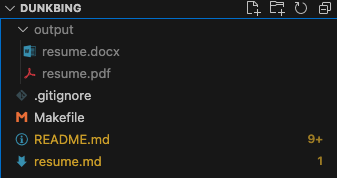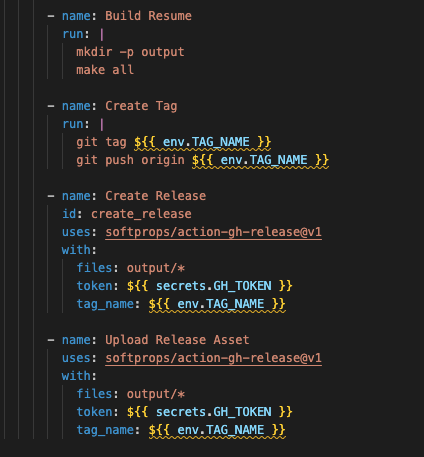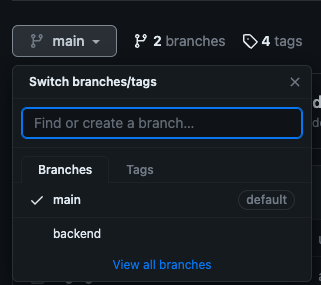In today's dynamic job market, maintaining an up-to-date and organized resume is crucial. However, it can be a challenging task without the right tools. In this post, I'll share with you how I manage my resume with Git, Github Actions, Makefile, and branching strategies.
Why Use Git for Your Resume?
1. Version Control: Git allows you to maintain different versions of your resume over time. This means you can keep a history of changes and easily switch between different versions, such as a general resume, one tailored for a specific job application, and more.
2. Collaboration: If you're working with others on a project or sharing your resume for feedback, Git makes collaboration a breeze. You can collaborate with others and merge changes seamlessly.
3. Backup and Safety: Git not only tracks changes but also serves as a backup system. Your resume is stored securely, and you can retrieve previous versions if needed.
4. Streamlined Workflow: Git simplifies the process of creating, editing, and formatting your resume. You can use plain text files (Markdown, for instance) and generate different formats (PDF, DOCX) when needed.
Setting Up Git for Resume Management
1. Create a Git Repository: Start by creating a Git repository for your resume. This can be done with a simple git init command.
2. Resume File: Save your resume in a text format (Markdown is a popular choice). This makes it easy to track changes and keep it under version control.
3. Versioning: Each time you make an update, commit the changes with a descriptive message. For example: "Updated skills section" or "Added new project experience."
4. Branches: Consider using branches to manage different versions of your resume. Create branches for specific job applications, skills variations, or different styles.
Makefile for Resume Management
A Makefile can simplify the process of converting your Markdown resume to different formats (PDF, DOCX) using Pandoc. Here's my sample Makefile:
# Convert Markdown (resume.md) to DOCX and PDF
RESUME = resume.md
OUTPUT_DIR = output
all: docx pdf
docx:
@mkdir -p $(OUTPUT_DIR)
pandoc $(RESUME) -o $(OUTPUT_DIR)/resume.docx
pdf:
@mkdir -p $(OUTPUT_DIR)
pandoc $(RESUME) -o $(OUTPUT_DIR)/resume.pdf
clean:
rm -rf $(OUTPUT_DIR)
.PHONY: all docx pdf clean
Benefits of Using Markdown
Markdown is a lightweight markup language that is easy to read and write. It's an excellent choice for managing your resume with Git. Here's why:
- Simplicity: Markdown is a plain text format that's easy to edit and understand.
- Portability: Markdown files can be converted to various formats (PDF, DOCX, HTML) using tools like Pandoc.
- Consistency: Markdown ensures your resume looks consistent across different devices and platforms.
Generating Different Formats
With Git and Markdown, you can generate different formats of your resume as needed. Tools like Pandoc or online services like GitHub Actions can help you automatically build PDF, DOCX, and other formats from your Markdown source.
Branching Strategies
To effectively manage different versions of your resume, consider using branching strategies. Here are a few ideas:
- Main Branch: Use the master branch for your general resume.
- Feature Branches: Create feature branches for specific job applications or tailored versions of your resume.
- Styling Branches: Experiment with different styling and formatting in dedicated branches.
Collaboration and Sharing
If you're working with others on your resume or seeking feedback, Git simplifies the process. You can use platforms like GitHub or GitLab to host your resume repository and collaborate with colleagues or peers. Others can suggest changes, and you can easily review and incorporate their feedback.
Conclusion
Managing your resume with Git not only simplifies the process but also makes it more efficient and organized. You can maintain a history of changes, collaborate with others, and generate different formats with ease. Plus, it's a great way to ensure your resume is always up-to-date and ready for the next career opportunity.
This is the GitHub Repository of my Resume
If you have any thoughts or suggestions on how to improve my resume, please give me a comment below. Whether it's about the content, formatting, or anything else :)





















